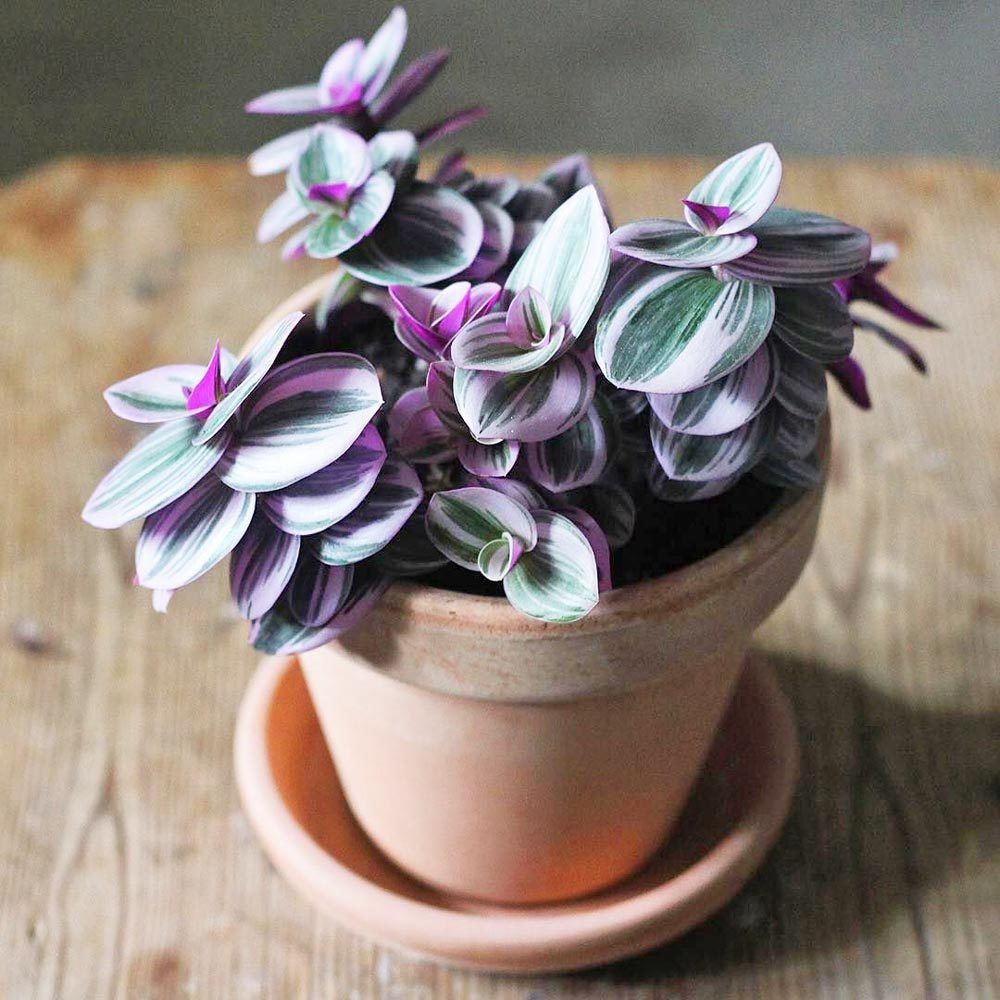There are many beautiful flowering plants to choose from, but Tradescantia Nanouk is a perennial that stands out among the rest. This plant is native to South America and was introduced in 1810 by botanist John Smith.

It has a thick stem with long leaves and elegant blue flowers that bloom all summer long. If you’re interested in growing this gorgeous, hardy flower, then keep reading for more information about how it can be done.
Caring For Your Tradescantia Nanouk
Size & Growth
Tradescantia Nanouk, also known as the spiderwort or bluebells is a perennial plant. This means that it will come back year after year without needing to be replanted every season. Tradescantia Nanouk has an upright stem and can grow up to six feet tall when given enough room.
When planted in pots, this plant typically stays smaller at about three feet tall which makes them perfect for small spaces like patios or balconies. It’s important to note that these plants do not produce any flowers until they’re two years old so you’ll have to wait a while before enjoying their beautiful blossoms.
Nanouk Flowering & Fragrance
They’re a favorite among gardeners for their showy flowers that come in many different colors such as pink, white, red, and purple. These plants will bloom continuously throughout the summer with an even more vibrant display during cooler months.
Tradescantia Nanouk has small leaves which can range from being dark green to light purple depending on its variety. This plant also produces fragrant blooms which makes them perfect for adding some fragrance to any garden space or patio area that needs it most.
Light & Temperature
The Tradescantia Nanouk is easy to care for as long as they’re given the right amount of light and warmth. The temperature needs to be within 60-85 degrees Fahrenheit in order to promote blooming and encourage their plants. They can also grow with a lot less water than other types of plants because they have small roots which means you don’t need much.
In terms of light requirements, this plant is known to thrive in bright light conditions and needs at least six hours of direct sunlight per day. If they’re not getting enough sun, they will start looking droopy or their leaves can even turn a dark green color which means it needs more light.
Watering & Feeding
This plant can tolerate periods of drought, but they do need regular watering. It’s recommended that you water them when the topsoil is dry to touch and keep an eye on your potting mix to make sure it doesn’t stay too wet for too long or else Tradescantia will start showing signs of rot.
These plants are also known as “Wandering Jew” due to their ability to grow new shoots from below ground level which means you don’t always have to repot if a shoot pops up outside its original container.
The Nanouk is succulent so they don’t need too much feeding. The plants will do their own self-fertilizing by producing root nodules that host bacteria which in turn produce nitrogen for the plant.
If you want to give them a helping hand, it’s recommended that you use an organic fertilizer or compost tea once every two weeks during late spring and summer and less often during fall and winter.
Soil & Transplanting
If you’re sprouting your Tradescantia Nanouk from a pot, make sure the soil is well-drained and doesn’t stay wet after watering. If it does become waterlogged, then replace it with fresh potting mix to ensure good drainage of excess moisture.
It’s recommended that you use a general-purpose fertilizer such as Osmocote or Nutricote on potted plants during spring and summer months for best results.
Grooming & Maintenance
During the winter months, Tradescantia Nanouk should be trimmed back to within a few inches of the ground. This will keep them compact and healthy during their dormant period.
If you are going with bare-root plants from our nursery, we recommend that you trim away any dead or wilted leaves before planting – they’ll look prettier for your gardening friends.
How To Propagate Tradescantia Nanouk
Tradescantia Nanouk is propagated through division or cuttings. You can divide them by digging up clumps that have spread and replanting the sections in a new pot with fresh potting mix.
If you would prefer to propagate from a cutting, remove side shoots when they appear at regular intervals during spring and summer months and allow the parent plant to produce flowers for pollination purposes before taking your desired section of stem out – this will ensure healthy roots.
Pests & Diseases
These plants are not known to have any pests or diseases that should be of concern. It’s important to keep an eye out for signs of distress in plants – this will help you identify when a plant is suffering from something like drought stress, insufficient root space, or harmful pest infestations. Remember: do what you can to make sure all plants (especially those who need more than the usual amount of care) are getting their fair share so they’ll stay strong and beautiful.
Conclusion
The Tradescantia Nanouk is a ground cover that is used as a houseplant. It was bred as a houseplant but was used as a ground cover in tropical climates. Its long foliage makes it a good choice as a tabletop plant due to its attractive colors and hardiness.
Moreover, it has a broad creeping habit that allows it to spread fast along the ground in spite of its relatively thin stems. It grows very well in mixed planters, and it is also a beautiful plant in its own right. It is an excellent addition to any collection of houseplants, and the Tradescantia Nanouk makes a great houseplant addition as well.